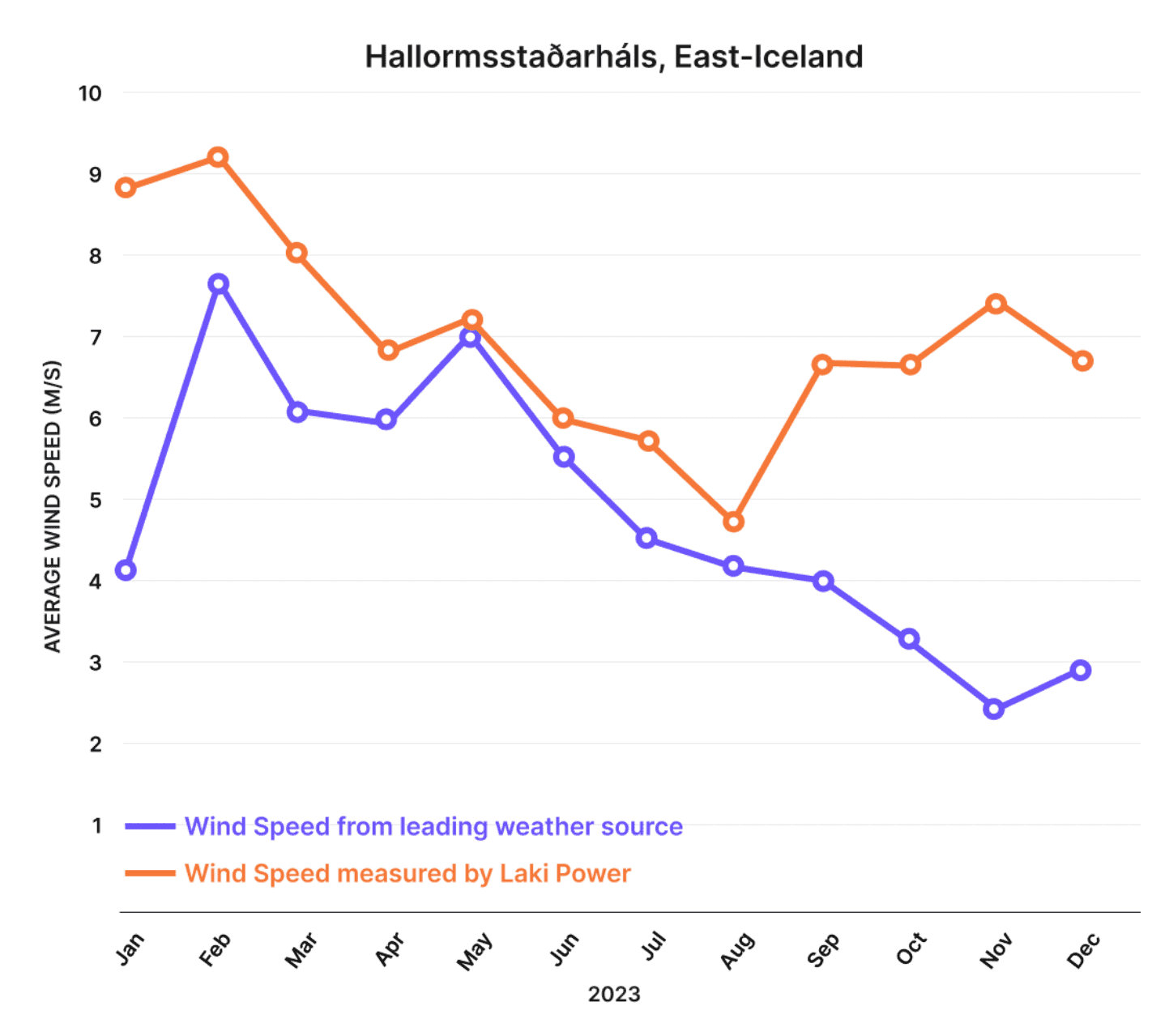
·
Mar 14, 2024

The transition towards a more electrified world, underscored by the rapid integration of renewable energy sources, has heightened the importance of using our existing power grid infrastructure effectively. As we strive to meet increasing demands and integrate renewables efficiently, Dynamic Line Rating (DLR) emerges as a key player. It allows us to maximize the capacity of power lines, but its effectiveness hinges on one critical factor: accurate wind measurements.
The Cooling Power of Wind
A graph detailing the average monthly wind speed measurements captured by Laki Power's LKX MULTI monitoring station at Hallormsstaðarháls in East-Iceland over the past year tells an illuminating story. It shows a clear correlation between wind speed and the capacity increases achieved through DLR. This is due to the cooling effect of the wind on power lines – a natural phenomenon that can be harnessed to improve line efficiency and safety.

However, it's crucial to note that the graph reveals periods, particularly in January and October, where this correlation isn't as strong. This inconsistency can be attributed to the direction of the wind relative to the power lines. During these months, the wind predominantly blew parallel to the power lines, not perpendicularly. The cooling effect, and consequently the capacity increase, is maximized when the wind flows perpendicularly to the power lines. This nuanced understanding of wind direction and its impact on line cooling is essential for precise Dynamic Line Rating, ensuring that the power lines operate safely and at their optimal capacity.
The Challenge of Accuracy
However, obtaining accurate wind and weather measurements is no small feat. APIs from even the most reputable weather data sources often fall short when it comes to the precision needed for effective DLR. Our data reveals that LKX MULTI consistently records higher wind speeds compared to a leading weather data source, particularly from September to December – a critical period for capacity management. These discrepancies are not trivial; they can mean the difference between operating at optimal capacity and falling short, or worse, overloading the system.

Our monitoring station’s data aligns with that of a nearby local weather station, reinforcing its accuracy. Moreover, the data reflects the specific conditions of the site, including its elevation (450m) and mountainous terrain, underlining the significance of site-specific, or 'micro', weather data. Such precise measurements are vital for optimizing the grid, especially when it comes to integrating renewables.
Renewables and the Need for Precision
For solar plants, particularly on days of peak sunlight, having precise wind cooling data ensures that energy is harnessed efficiently, preventing excess heat from damaging power lines and allowing the transport of maximum power. Wind farms rely on this data to adjust turbine operations, enhancing energy capture during optimal wind conditions and protecting equipment when gusts are too strong. Similarly, hydro plants benefit from accurate weather readings to manage water flow and turbine activity, ensuring maximum energy production when needed.
Tested, Calibrated, Reliable
Our commitment to precision is why the ultrasonic wind sensor on the LKX MULTI has undergone rigorous testing and calibration by Deutsche Windguard in a wind tunnel. This process ensures that our measurements account for the unique dynamics of power lines, providing data you can trust to make informed decisions for DLR.

A Call to Action for a More Efficient Future
As we forge ahead in this era of electrification and renewable energy, the need for monitoring systems like LKX MULTI, which provide accurate, real-time wind data, has never been more vital. This technology is not just about adhering to regulatory orders like FERC 881 for AAR; it's about unlocking the full potential of our power grid. It's about making every gust of wind count towards a more efficient, resilient, and sustainable power infrastructure.
For utilities and grid operators eyeing the horizon of DLR and AAR, the message is clear: the path to optimization starts with precision. Laki Power stands ready to guide you through this journey with technology that transforms wind into actionable data.
Contact us to learn more about how our solutions can empower your grid operations and help you navigate the renewable energy landscape with confidence.